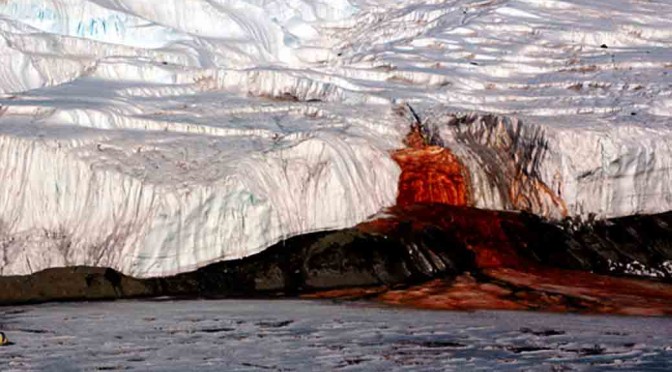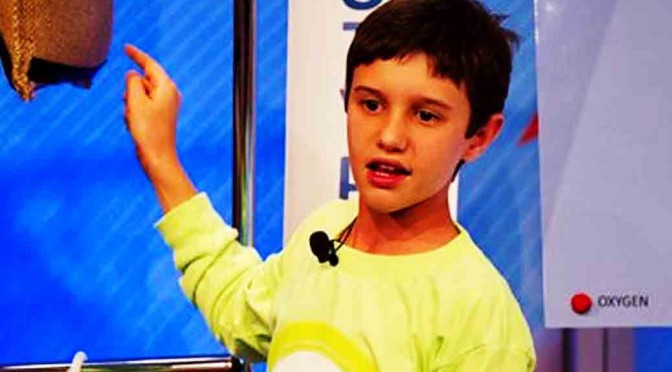By Anupum Pant
Red colored water, which gives it name blood falls, emerges continually from the edge of a glacier in east Antarctica. The source of this red-colored-water is said to be a lake that is buried 400 meters under a glacier. The water of this lake is extremely salty and is about 3 times saltier than sea water. It is so salty that even at temperatures that Antarctica experiences, it doesn’t freeze. The lake is estimated to be around 5 million years old!
5 million years ago, this part of Antarctica was under sea water. Gradually glaciers started collecting around and over the lake. This made the water body isolated from the main sea and it became a lake eventually. Over time, as it got separated – like the Taal lake – it grew saltier (Taal lake got isolated too, but it turned less saltier). With this lake, the organisms living in it got trapped in this natural time capsule too.
What gives it the color red?
The falls are not red due to some mysterious spores that were found in the red rains of Kerala. What gives it that color, is a popular chemical phenomenon – iron rust.
The lake gets its supply of iron from the bedrock below it. As the water leaks out from the edge, the iron present in water gets oxidized. This oxidized or rusted iron gives the water its red color.
And since the lake has almost no supply of oxygen from around it, the water underneath is probably still like…water – not red (I’m not sure about it).
But that isn’t even anything interesting I’ve talked about the blood falls yet. The most incredible thing is the creatures that have been found living in those waters.
For millions of years, in the extremely salty waters of the lake with almost no oxygen or sun light, scientists have found a kind of micro-organism that has survived there. The kind of process they use to live has dazed scientists.
The microbes living there have been surviving on iron and sulfur! By breaking sulfates to get oxygen. And iron has been restoring the sulfates. It is a beautiful cycle that has never been seen anywhere else. This strange cycle has widened our view on how life could exist on other planets without oxygen in native state.
Source – SciShow by Hank Green.













